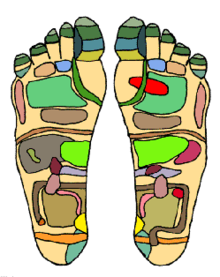DIABETIC RETINOPATHY / TERAPI MASALAH MATA BRPUNCA DARI KENCING MANIS
Overview
Diabetic retinopathy (“DR”) is a complication of diabetes caused by damage to blood vessels in the eyes. There aren’t usually any early warning signs or symptoms of DR. When vision loss occurs it is often too late to fully restore sight. That is why it is crucial that diabetics have eye exams at least once a year.
In advanced cases symptoms occur when the retina, located in the back of the eye, develops abnormal new blood vessels that are weak and prone to bleeding. As more blood leaks out of the vessels over time, vision becomes increasingly obstructed. If left untreated, some patients may only be able to see the difference between light and dark, and nothing more. In severe cases, the condition may even cause the retina to detach, thus requiring surgery to mend. DR may affect as much as 80% of people who have had diabetes for ten or more years.
Prevalence
An estimated five million individuals worldwide suffer from DR today, accounting for 4.8% of blindness worldwide. According to the World Health Organization, diabetes is the leading cause of new cases of blindness among adults aged 20-74 years. More than 170 million people worldwide currently have diabetes, and this number is projected to skyrocket to 366 million by 2030. Approximately half of these cases are likely to develop DR. Rates of both diabetes and DR are expected increase significantly in developing countries due to a lack of access to health care.
Risk Factors
Factors that may increase the chance of someone with diabetes developing DR include
- How long the patient has had diabetes
- How well the patient maintains his or her blood sugar level
- High blood pressure
- High cholesterol
- Pregnancy
- Tobacco use
- How well the patient maintains his or her blood sugar level
- High blood pressure
- High cholesterol
- Pregnancy
- Tobacco use
Prevention
Development of DR can be prevented or slowed through the careful management of one’s diabetes, which includes the following:
1. Getting annual eye screenings, which can detect diabetic retinopathy in its early stages.
2. Meticulously regulating one’s blood sugar.
3. Keeping an eye on cholesterol and blood pressure.
4. Avoiding tobacco use
2. Meticulously regulating one’s blood sugar.
3. Keeping an eye on cholesterol and blood pressure.
4. Avoiding tobacco use
Treatment
SEE International’s preferred method of treatment is called Pan-Retinal Photocoagulation, or PRP for short. This technique employs a laser to stop neovascularization (the growth of new abnormal blood vessels due to diabetes). This is a less invasive treatment than surgery, and is less expensive than retinal drug injections, but may require follow-up treatments, depending on the severity of neovascularization and how well the patient has cared for his or her diabetes.
SEE International & Diabetic Retinopathy Around the World
SEE is committed to addressing the worldwide vision crisis caused by the exponential growth of diabetic retinopathy cases by:
1. Training local eye care personnel how to accurately diagnose DR and appropriate treatment techniques.
2. Working with local organizations to increase awareness and prevention of diabetes and DR.
3. Strengthening local health care infrastructure.
4. Launching a DR Initiative in 2011 with its long-term partners in Honduras, Peru, Vietnam, Georgia, India, and Ghana. SEE is working with these pilot sites to build capacity by placing donated DR equipment on permanent loan and by visiting the clinics on a regular basis.. The SEE expedition teams help address the backlog of patients and train the local ophthalmologists on how to identify and treat the disease on their own. During the first 2 years of the program there have been more than 1,000 DR screenings and 32 laser treatments performed.
2. Working with local organizations to increase awareness and prevention of diabetes and DR.
3. Strengthening local health care infrastructure.
4. Launching a DR Initiative in 2011 with its long-term partners in Honduras, Peru, Vietnam, Georgia, India, and Ghana. SEE is working with these pilot sites to build capacity by placing donated DR equipment on permanent loan and by visiting the clinics on a regular basis.. The SEE expedition teams help address the backlog of patients and train the local ophthalmologists on how to identify and treat the disease on their own. During the first 2 years of the program there have been more than 1,000 DR screenings and 32 laser treatments performed.
For more information about our Diabetic Retinopathy Program, please contact Rachel Siegel, Retina Program Coordinator, at rsiegel@seeintl.org.
Copy from SEE International : Masbi


